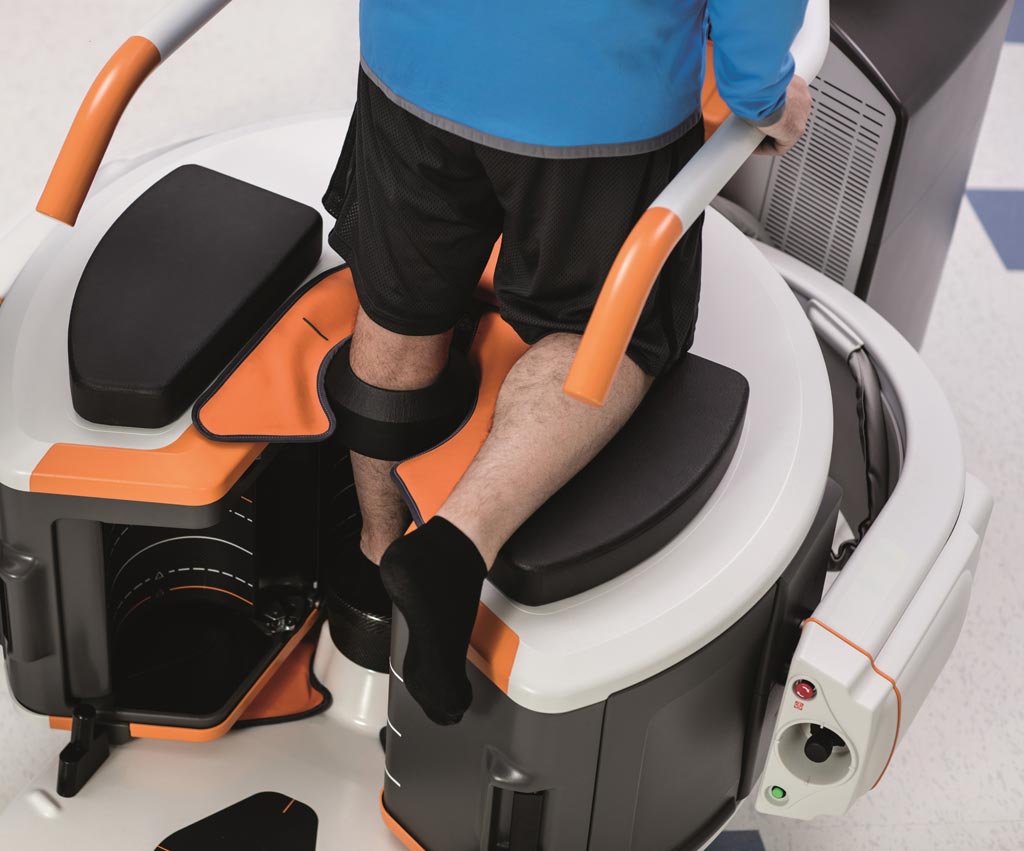Extremity CBCT System Reduces Metal Artifacts
By MedImaging International staff writers
Posted on 04 Dec 2017
A compact cone beam computerized tomography (CBCT) system that can image extremities at the point of care (POC) now offers advanced metal artifact reduction software.Posted on 04 Dec 2017
The Carestream Health (Rochester, NY, USA) OnSight 3D Extremity System is designed to capture high-quality three dimensional (3D) images at the POC via an easily accessible open bore that allows both upper and lower extremity screening, including weight-bearing studies that are not possible with traditional CT. System features include large field isotropic images that can reveal subtle or occult fractures; reduced doses compared to conventional CT systems; image acquisition of the extremity in a single 25-second rotation; and a small footprint and simplified design that cut time and cost of system installation.

Image: A knee being imaged with the OnSight 3D extremity system (Photo courtesy of Carestream Health).
An optional software upgrade offers advanced metal and scatters correction algorithms and reduced noise uses iterative reconstruction techniques from the original scan in order to eliminate the need for additional imaging studies; image processing can be easily adjusted and optimized according to the amount of metal present via an intuitive touch screen interface. For added flexibility, the metal artifact reduction software can be activated prior to the scan or may be applied after the original reconstruction is complete.
“Carestream’s second generation of software takes our state-of-the-art original metal reduction software to a new level,” said Helen Titus, worldwide marketing director for ultrasound and CT at Carestream. “It provides enhanced flexibility, depending on the metal content present and reduces the visual distortion caused by screws, implants, rods, and other metal objects to create improved visibility and diagnostic confidence.”
During CBCT, the region of interest is centered in the field of view. A single 200-degree rotation acquires a volumetric data set used to produce a digital volume composed of 3D voxels of the anatomical data, which can then be manipulated and visualized. CBCT has recently become more practical thanks to the introduction of large-area high-speed digital X-ray imagers, such as hydrogenated amorphous silicon (a-Si:H) based flat-panel detectors.














